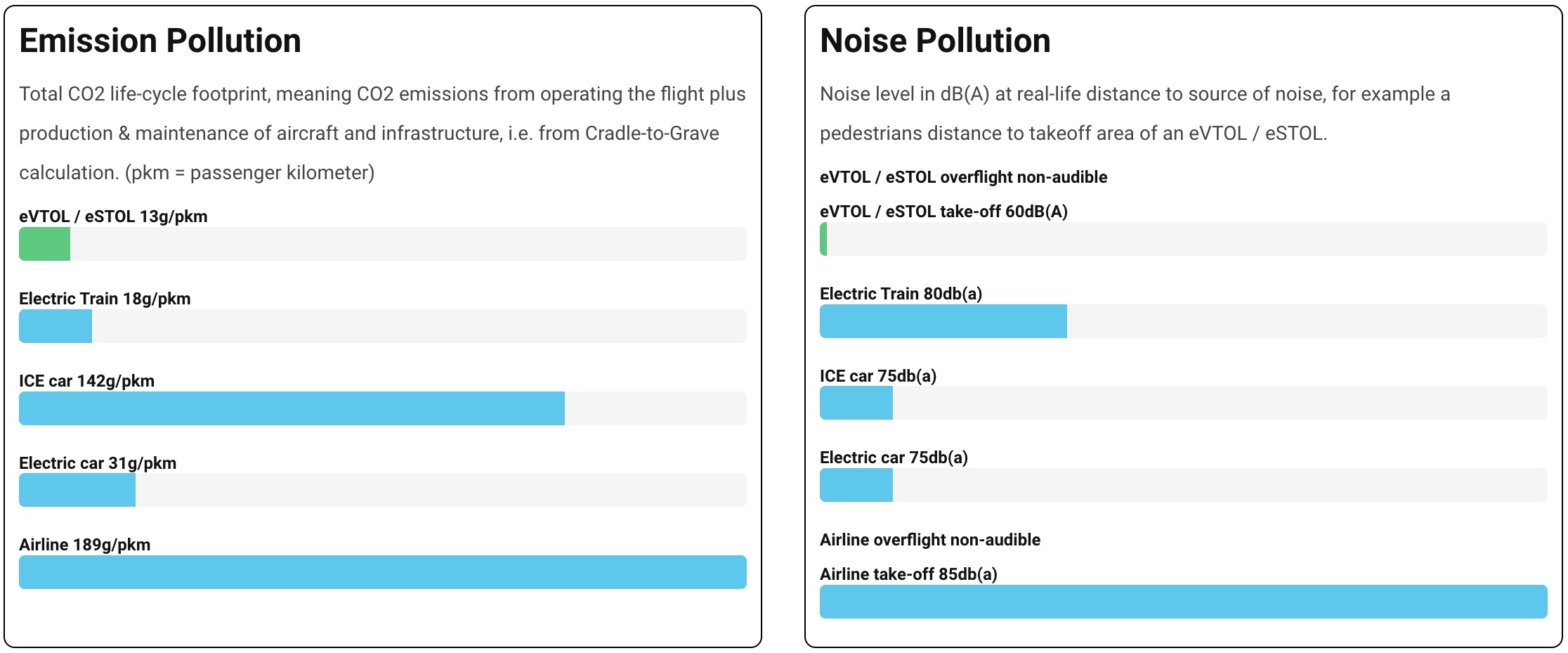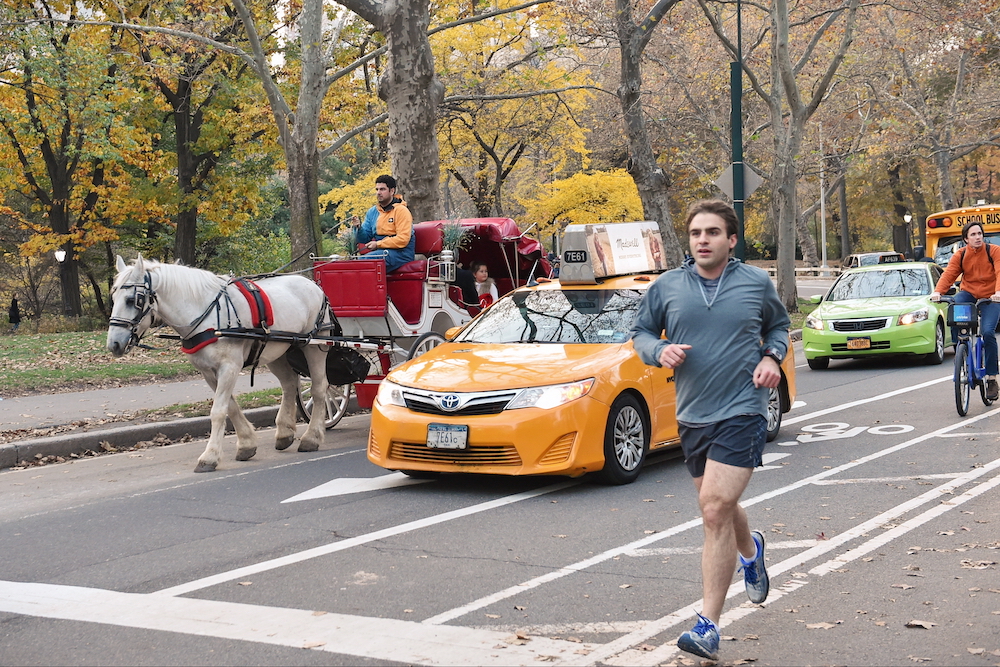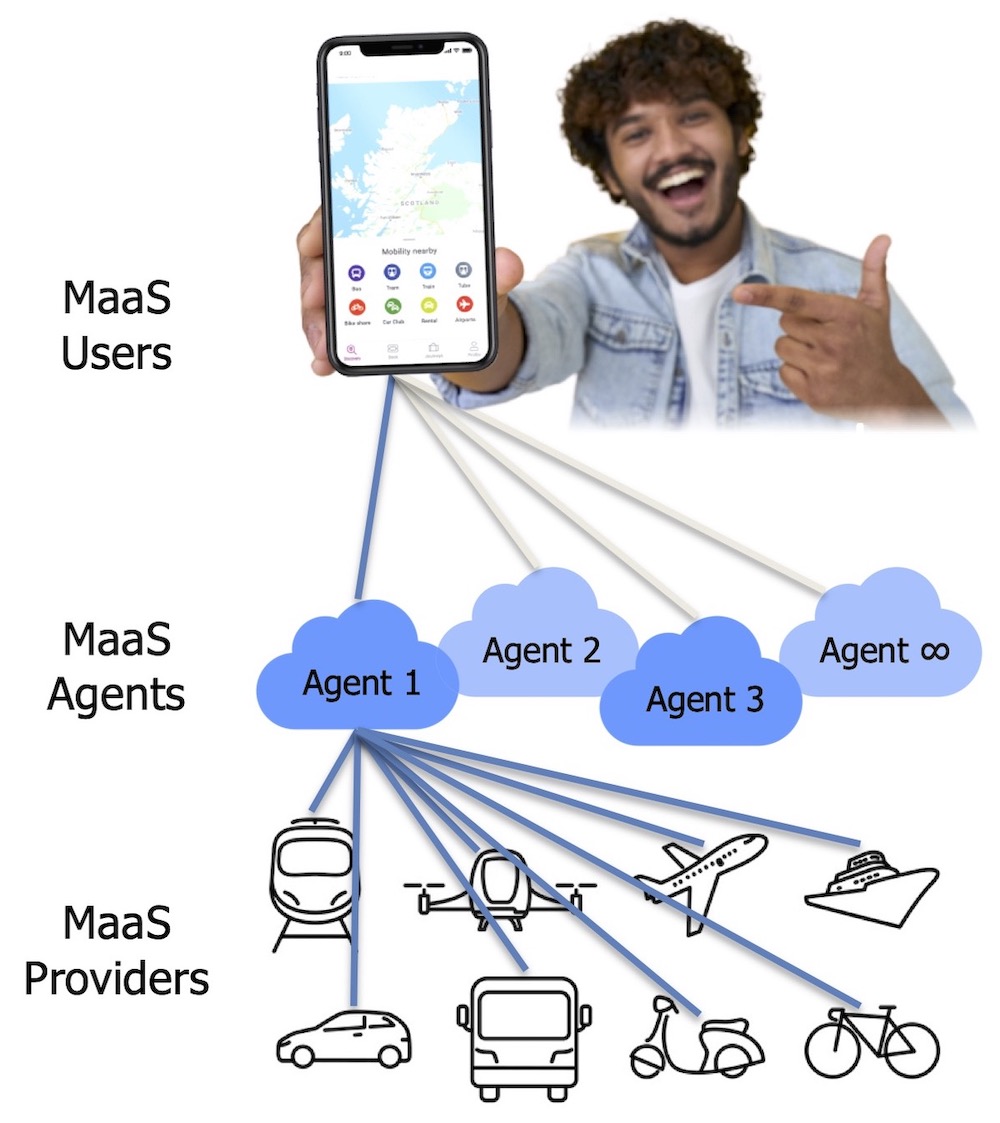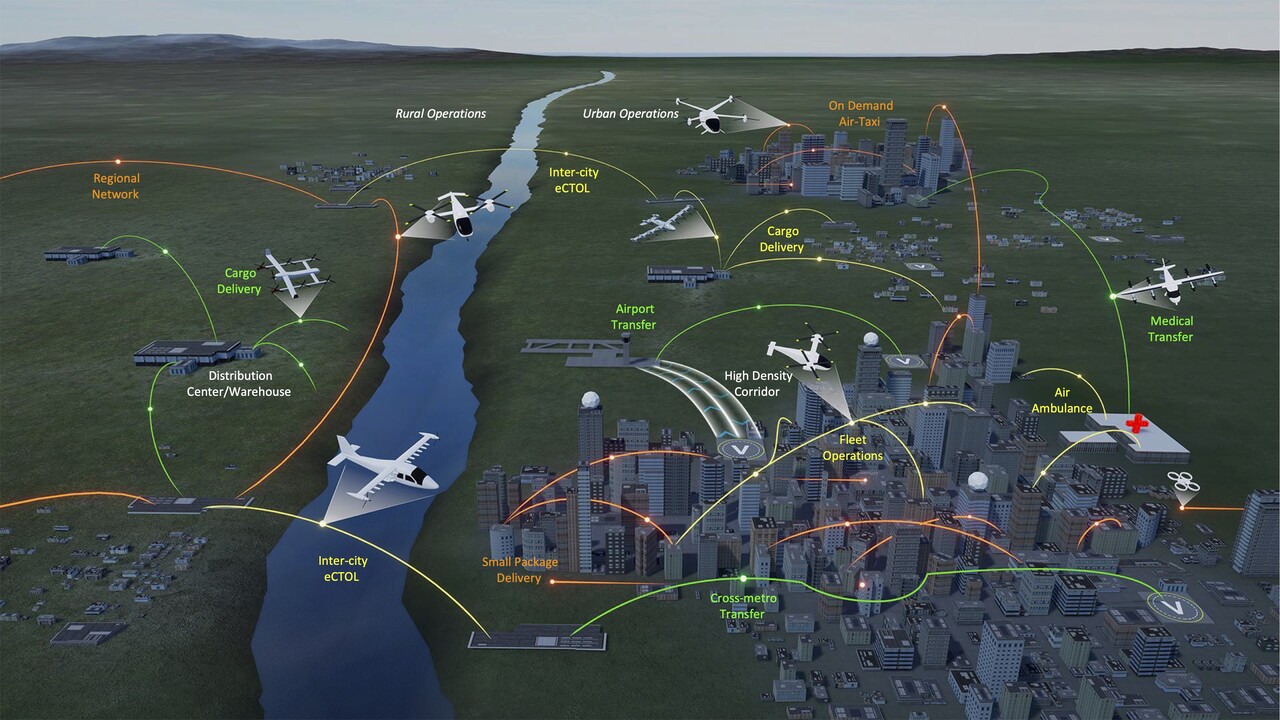By: John Martin Winther Andersen
Aviation is entering its 3rd revolution - electrification of Aviation, moving away from fossil fuels, meeting or exceeding all demands for becoming a climate conscious mode of transportation:
- Zero emissions (where Battery-Electric technology is used)
- Zero-to-low noise (where Battery-Electric technology is used)
- Demanding least amount of infrastructure (no need of roads, rails, tunnels, bridges etc.)
- Delivering the most circular usage of natural scarce resources (batteries are recyclable and nearly no usage of gravel, dirt, sand for construction, concrete, metals etc.)
- No need of "plowing" through nature and landscapes or expropriating peoples homes for roads and rails, leaving a lot of nature and landscapes un-touch.
By its 3rd revolution, new possibilities opens up for Aviation, because what it used to be accused of, i.e. noise, pollution and price/cost, those three topics are being turned up-side-down by electrifying Aviation. This provides new opportunities for utilizing Aviation a lot more by many more and much closer where people and goods are and need to go. The umbrella to cover all this is what Advanced Air Mobility (AAM) is all about.

Promises and Expectations vs. Reality
Announcing the upcoming of flying cars, flying taxi's, "Back to the Future" movie scenarios has happened before, and failed. Since back in the 40's different people have tried to build a flying car without much success getting to market.
In the 50's - 70's especially in New York but also Los Angeles and San Fransisco saw attempts using helicopters for short-distance commute and it had success due to government support until that was removed, then it became to expensive.
Then in the 2014 with digitization using a newly developed app, Fly Blade in New York re-introduced the usage of helicopters on short routes and charter basis and had and still has success, among different reasons it got very easy to book and digitization opened up for crowd-sourcing out empty seats to other potential passengers lowering the cost for the customer even further. But they are as well as we are well aware of the noise helicopters create, is a complete and total show-stopper for any development and expansion of utilizing the sky as a daily mode of transportation at these lower altitudes.
Above video shows the Joby Aviation S4 model, a 4-passenger plus pilot all electric eVTOL aircraft that can fly 150 miles on a single charge, has a max. speed of 200 mph and expected on the market around year 2025, showing how little noise it produces compared to other conventional similarly sized gasoline powered aircrafts and helicopters, measured from the ground at 500 meter altitude, the same altitude most small airplanes and helicopters fly over land and cities. In general at take-off it is 100x quieter or more than a helicopter, as the journalist from the program 60 Minutes experienced, and if flown over a city, the little sound it makes will blend in with the city's background noise and not at all feel intruding over open land.
With electrification of Aviation, we can remove the noisy combustion part that creates the wast amount of noise an aircraft produce, equivalent to approx. 16-22 dB(A) reduction of same aircraft. Just like we on the roads today can hear the huge difference between a conventional car and an electric car, the latter has to have external noise added sometimes sounding like a spaceship, not to startle the nearby pedestrians of a sudden approaching silence car.
AAM need "roads" in the sky
 If we travel on a road today, different rules and legislation dictates how we each act and react to make sure that all sorts of very different types of transportation, i.e. cars, trucks, trams, motorbikes, bicycles, horseback riders, pedestrians, busses, autonomous vehicles etc., can mutually use the same road connection from A to B in a safely manner.
If we travel on a road today, different rules and legislation dictates how we each act and react to make sure that all sorts of very different types of transportation, i.e. cars, trucks, trams, motorbikes, bicycles, horseback riders, pedestrians, busses, autonomous vehicles etc., can mutually use the same road connection from A to B in a safely manner.
 If we travel in the air today at the lower altitudes like most small airplanes and helicopters does that AAM will cover in the future, it is a bit like during the American Old West period, where you could ride your horse pretty much where ever you wanted to. Today in the air at the lower altitudes we basically can fly in what ever direction we want to even without asking for permission, we just have to visually "see-and-avoid-each-other". There is at large no current defined roads to follow, because basically like back in the Old West period there isn't that many users yet to demand that much regulation, the lower airspace is at large pretty much un-utilized.
If we travel in the air today at the lower altitudes like most small airplanes and helicopters does that AAM will cover in the future, it is a bit like during the American Old West period, where you could ride your horse pretty much where ever you wanted to. Today in the air at the lower altitudes we basically can fly in what ever direction we want to even without asking for permission, we just have to visually "see-and-avoid-each-other". There is at large no current defined roads to follow, because basically like back in the Old West period there isn't that many users yet to demand that much regulation, the lower airspace is at large pretty much un-utilized.
Add in the years to come a lot of a wide variety of new small electrified and hybrid aircrafts, for example eVTOL, eSTOL and eCTOL, where the "e" stands for electric and the "V", "S" or "C" for Vertical, Short or Conventional TakeOff & Landing, remote and autonomous drones and other types to come like private recreational electric aircrafts, add a lot of these very different types of aircrafts into the sky because of upcoming popularity due to low-to-no-noise pollution nor emissions, cost reduced to a fraction and easy to control, regulation and legislation in the sky will be needed to keep it safe for everybody in the air as well as on the ground.
Just like we utilize the crowded roads on the ground today in a safe manner, that is in its essence what AAM is about, making safe and meaningful "roads", rules and legislation in the sky where needed for an expected massive increase of aerial vehicles of all sorts and sizes and purposes, for example;
- Cargo drones, small and large incl. healthcare drones like it is done in Rwanda.
- Flying taxi's (eVTOL) seating approx. 2-6 people and later more.
- Electric/Hybrid airplanes (eSTOL & eCTOL) seating approx. 10-40 people or more.
- Flying ambulances and firefighting UAV/UAS's.
- Drones for Agriculture, Surveillance, Support to Police, Firefighting drones etc..
- Private 1-4 seater electric aircraft like the Swedish Jetson.
- Maybe even flying "motorbikes" and probably more to come we haven't seen yet
Up to 84.000 travelers per day
Beside many of the specialized purposes mentioned above, a major advantage of moving some of the current land-based daily commuting traffic up in the air, is to ease the burden on land, decrease travelers travel time substantially, decrease emissions and avoid and minimize congestions, without having to continuously expanding number of road lanes, because as data shows, more roads equals more cars.
With electrification the cost of moving a passenger goes as low as 1/5 what it used to cost in a helicopter. Because we can go direct most of the time in the air no matter what is underneath us, land or water, travel time is reduced significantly on most distances.
Though other than massive metropolitan areas like New York, Sao Paulo, Singapore with constant huge congestions, we expect a passenger in Scandinavia has to travel min. 50-75 of land-based kilometers, before it starts to make sense time wise to transit from land-to-air-and-back-to-land to save a noticeable amount of total journey time. We don't foresee much of a market in Scandinavia in the sub-part of AAM called Urban Air Mobility (UAM), which is often defined traveling from approx. 0-75 km. distance.
But in the sub-part of AAM called Regional Air Mobility (RAM), ranging approx. 75-500 km, we expect a huge potential. National simulations for the Danish market support this and indicates when the cost per passenger kilometer (pkm) drops to a certain level, which we expect can happen from around year 2035, in Denmark alone up to 84.000 travelers per working day in a mix of business, commuters and leisure travelers, will be using this new service that Regional Air Mobility offers, primarily moving traffic away from road traffic. Approx. a 1/4 of these will be traveling in/out of Greater Copenhagen and the rest across all over the country, creating a more dynamic demographic with better access to jobs, expertise, more choices for location of settlement etc, integrating rural parts and islands much better with the rest of the country.

It is obvious that compared to todays utilization of the lower airspace of maybe a few dozen daily airplanes flying across the country, moving THAT many people per day in the hundreds of electrified aircrafts needed to move up to 84.000 travelers per day, need to be regulated to keep traveling by air safe, just like roads on land has become regulated how we as road users act and interact with each other. People in governments, legislators, experts etc. have started looking into this, because they know this is coming in a nearby future.
Vertiports near other modes of transportation
We can land in a customers backyard if it is large enough, that is even legal today with helicopters, but we can not expect that to happen in build-up areas like cities and suburban areas.
For passengers to be able to get easy and seamless access to AAM, landing locations must be included near other public accessible modes of transport like metro, taxi, city busses, e-scooters, rental bicycles etc., the more options the better, so the passenger can choose and transit from air to land or vise-versa and get that last mileage of travel covered by a land-based mode of transportation of his/her choice.
It is therefore very important that city planners, legislators etc. include in their plans such landing locations, just like a bus need a bus-stop or bus-terminal to let passengers on and off.
Mobility as a Service (MaaS)
Except for the few electrified aircrafts owned and used for private usage that will come, all the many hundreds of public accessible electrified aircrafts made for scheduled flights and for OnDemand charter, will be included in the publics current land- and sea based transportation choices in corporation with and as compliment to each other.
When a traveller or commuter need to go from A to B or where ever he/she wants to go, in the nearby future he/she will be able to based on the persons very own personal preferences to choose where and with what he/she want to travel in and when, using just an app.
This is called MaaS, short for Mobility as a Service, and the app is called a MaaS client, an app that is provided to the customer by different Agents. The customer choose who he/she want to use as an Agent.
MaaS is coming because it is already an EU legislation from 2017 that is in the process of being implemented.

A simple way to explain MaaS, the MaaS client, the Agent behind the client and what it will do for the traveler or commuter, is to compare the MaaS Agent to ones preferred Supermarket we go grocery shopping.
Imagine you are in for cooking pasta for dinner. You will need tomato sauce, pasta, maybe minced beef etc., but for convenience you usually buy it all in the same Supermarket you are used to use instead of having to shop tomatoes at the greengrocery, the minced beef at the butcher etc.. And it doesn't matter if you buy all these standard ingredients at a Lidl, Aldi, Bilka, Costco or Walmart Supermarket, they all have the same different ingredients you need for your pasta.
Or you could go grocery shopping online and get it delivered as well ... via an app.

Instead of groceries, your preferred MaaS Agent offers you via the client app, a "supermarket" of travel choices. And all the different types of public accessible modes of transportation out there will be offered by all the different MaaS Agents, because the EU legislation require that any company offering transportation by schedule has to upload their schedule into the cloud, so all the different MaaS Agents can offer their customers all the possibilities. This will help keep competition high and price low.
It is essentially empowering the customer, just like all the different Supermarkets often laying in the same neighbourhood empowers the customer to choose from whom and what they want at any given time. If you are not satisfied with one Agent, switch to another, just like with Supermarkets you can take your business where ever you want to.
NASA short explanatory videos about AAM
In this article we have only explained what AAM will do for passengers and how it will work along with MaaS seen from a customers and citizens point of view.
NASA has published these short 2 min. videos linked below, that each explain a relevant topic of AAM, so please watch them for more information for other parts what AAM is about other than passenger transportation, for example cargo delivery, autonomy etc..
You are welcome to contact us for further at eVTOL.dk if you have questions or a request about AAM.
Episode 1 - Emergency Response
Episode 2 - Healthcare
Episode 3 - Automation
Episode 4 - Vertiports
Episode 5 - Travel Time
Episode 6 - Noise
Episode 7 - Infrastructure
Episode 8 - Future Airspace
Episode 9 - Safety
Episode 10 - Ride Quality
Episode 11 - Cargo Delivery

